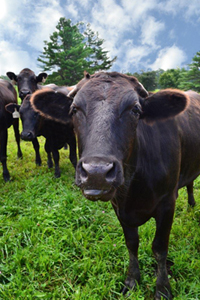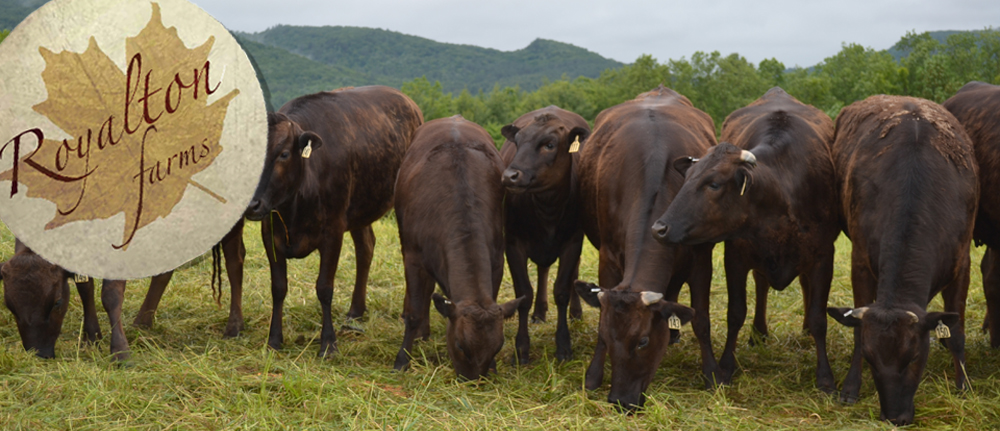Wagyu cows marble at a much higher rate or percentage than any other beef sold in the world today. High quality Wagyu meat typically has a 20 to 25% marbling. In comparison, Angus beef is only 6 to 8%. While some consumers may see this marbling as unhealthy, recent studies done by Texas A&M and the Australian Wagyu Society suggest that the fat found in  Wagyu beef is actually healthier than fat found in the average beef sold in the United States today due to higher levels of omega-3 and omega-6 fatty acids. These raised levels change the ratio of unsaturated (good) fats to monosaturated (bad) fats to create a healthier meat.
Wagyu beef is actually healthier than fat found in the average beef sold in the United States today due to higher levels of omega-3 and omega-6 fatty acids. These raised levels change the ratio of unsaturated (good) fats to monosaturated (bad) fats to create a healthier meat.
The different fat marbling of Wagyu meat creates a product that is of such a high quality that it can't be graded on the typical American scale of prime, choice and select. Instead, Wagyu meat is graded on a Japanese scale of 1-12, with 12 being the highest. A prime cut of meat, the highest grade you can get on the USDA scale, is roughly a 5-6 on the Japanese scale. In comparison, a full-blood Wagyu will grade anywhere from 7-12, completely off the USDA scale, if raised correctly.
In addition to the health benefits, Wagyu meat also tastes better. The different marbling gives the meat a melt-in-your mouth flavor paired with a meat so tender you can cut it with your fork.
Wagyu, pronounced wah-goo, literally means Japanese (wa) cow (gyu). This breed dates back to 17th century Japan, where these cows were used like oxen as Japanese religion prohibited eating meat. It is believed that using these cows for pulling and tilling soils created a breed with unique marbling traits.
The Japanese Wagyu herd was closed from 1635 to 1868. The breed was opened for a brief period during the Meiji restoration in the late 1800s, when the cows were crossbred with many more common European breeds. The government again closed the herd in 1910 after it decided there was too much genetic variation between the regions. After the herd was closed, regional isolation continued enough to create the lines of Wagyu that we know today, the most common being Tajima, Shimane and Kedaka.
Each line is named after the Japanese region that they originated. While smaller framed, Tajima (Tajiri) Wagyu typically have a very high marbling content. Though Shimane (Fujiyoshi) Wagyu and Kedaka (Tottori) Wagyu are both known for having larger frames, Shimane Wagyu are also known for their maternal instincts.
Wagyu were first brought into the United States in 1976 when four bulls were imported from Japan. More animals were not brought into the United States until 1990, and then only a few dozen were brought in. Wagyu cows have not been imported from Japan since then, as Japan has declared Wagyu genetics a national treasure and forbidden any cows, embryos or semen to leave the country.
